Soft and tender egg free yellow paleo cake made with coconut flour. Only 15 minute prep and about 25 minutes to bake with only 8 ingredients! This cake is dairy, nut, and egg free! Top it off with a paleo chocolate frosting, coconut whipped cream, or enjoy it as is!
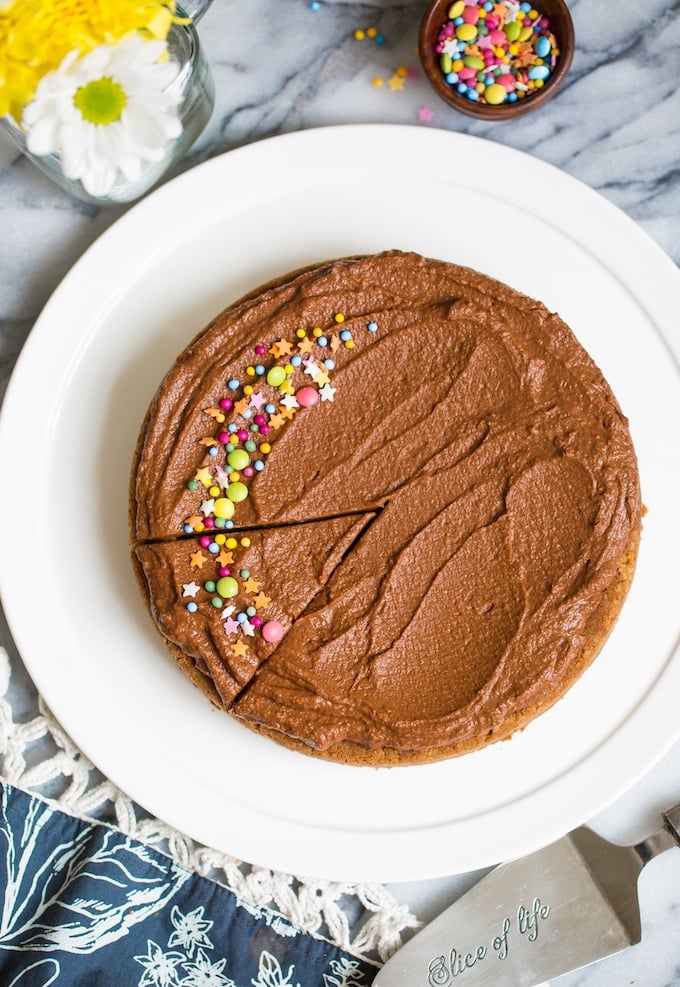
I can’t even tell you how much of an accomplishment it feels like to FINALLY have nailed this egg free + nut free vegan coconut flour cake recipe. No joke.
I’m not even exaggerating when I say that I went through at least 10 different variations of this coconut flour cake before finally getting it right. About halfway through all my testing I had to take a couple weeks off because I was so burnt out on baking cakes.
It’s my holy grail of recipe developing and I am so PUMPED to finally be able to share it with you guys! So let’s get to it…
Baking with Coconut Flour
So here’s the thing about coconut flour: it’s notoriously difficult to work with. I go into more detail about the ins & outs of baking with coconut flour in another post, but the gist of it is that’s just an extremely absorbent flour. You really need a lot of moisture in your ingredients which is why eggs are almost always a key ingredients in many coconut flour baked goods and why it took me so long to deliver on an egg free version of the original cake.
How to Make: Egg Free Paleo Cake with Coconut Flour
The base for this recipe comes from my paleo coconut flour cake that I shared a while back. The core ingredients are the same though the amounts themselves do differ by quite a bit: coconut flour, tapioca flour, coconut oil, vanilla etc with the addition of coconut milk for added moisture to replace the eggs.
Making the cake itself is pretty easy. The prep time should really only take about 15-20 minutes. It’s mostly just a matter of whisking and combining.
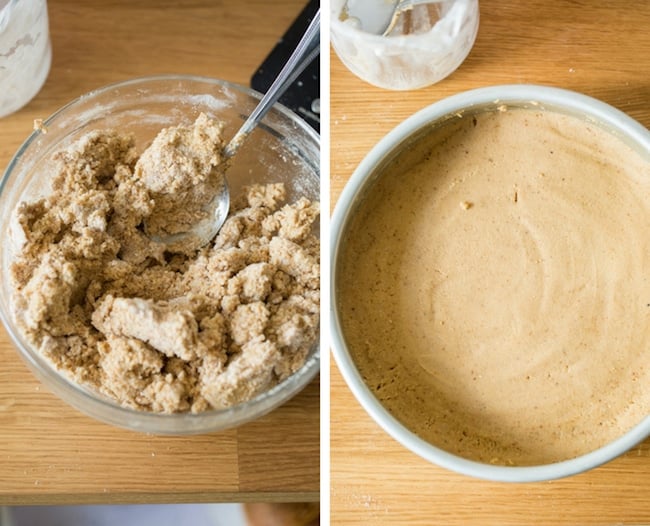
A Note about the Batter/Dough
That all being said this cake making process will look and feel very different to what you would normally be used to when it comes to baking cakes. Instead of making a batter, this makes more of a dough. It’s thick and pliable and really needs to be handled differently than typical cakes.
Start out by mixing the wet and dry ingredients together separately: mix the flours and sugar in one bowl and the oil, milk and vanilla in another. To combine, pour the wet into the dry and mix together with a spoon as much as you can. Once your dough/batter resembles the clumpy dough in the picture above start using your hands to finish mixing. Clump the dough together and scrape down the sides mixing it all together.
When you’re ready to bake, transfer the dough into your greased cake tin. Since the dough is so thick you’ll need to smooth it out into the pan yourself. It should look and feel very soft at this point like in the second picture just above.
Then just pop it in the oven for about 25ish minutes and that’s it!
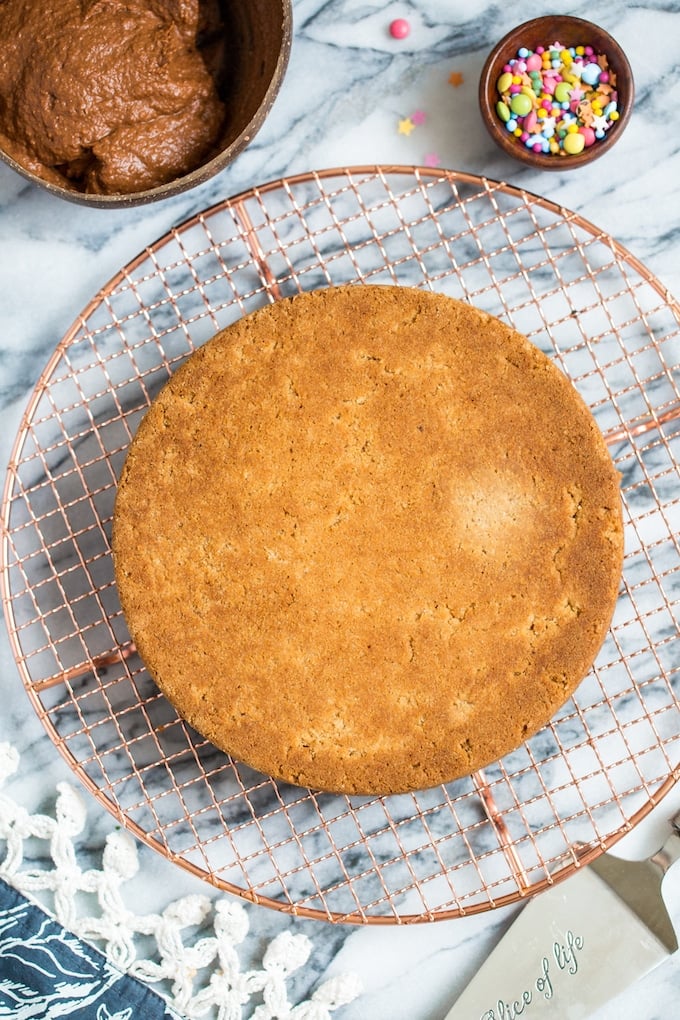
Tips for success
- The coconut oil should be melted in a liquid state and cooled to room temperature so that it mixes into the dough easily.
- The coconut milk should also be room temperature.
- Ideally you want to use a full fat coconut milk for the extra moisture. If your coconut milk is one that separates the cream from the water just stir it up or shake the can well before using.
- Don’t be afraid to use your hands to mix the batter/dough together. I personally find it easier than a mixing spoon in this recipe.
The end result
Since baking soda + apple cider vinegar are the only leavening agents here, keep in mind that this isn’t going to rise up very much. That being said this paleo cake is very soft and tender.
If you’re in the need of a good birthday cake you can easily double the recipe to make a couple of layers! This recipe is the perfect treat to make for someone with a lot of food allergies as it’s:
✔️Gluten Free
✔️Dairy Free
✔️Egg Free
✔️Nut Free
✔️Vegan
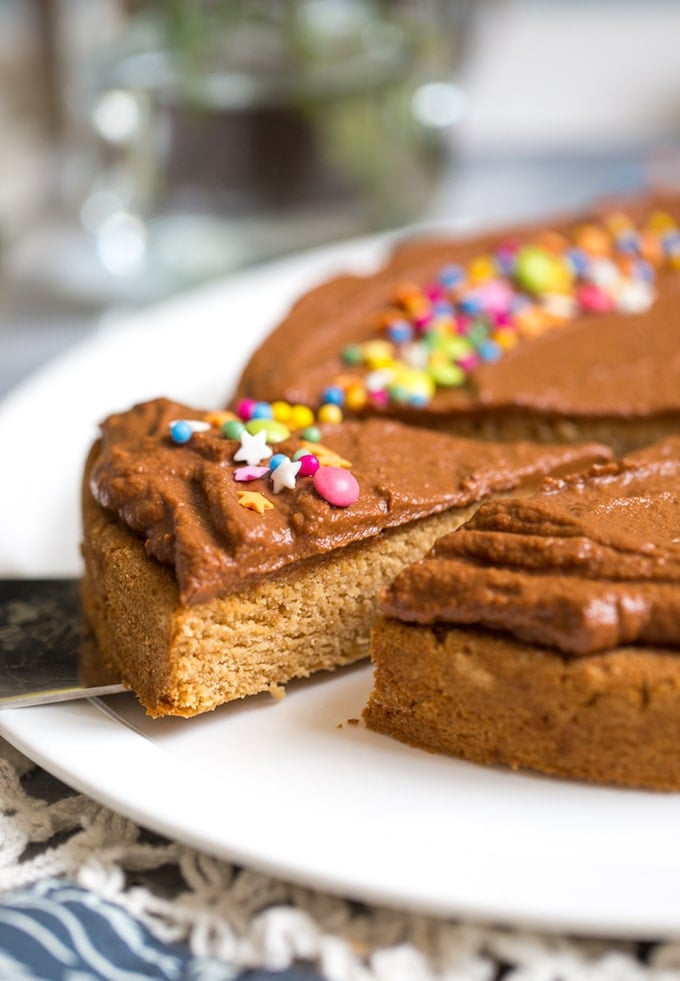
I hope you enjoy this cake as much as we do – if you try it out please let me know what you think!
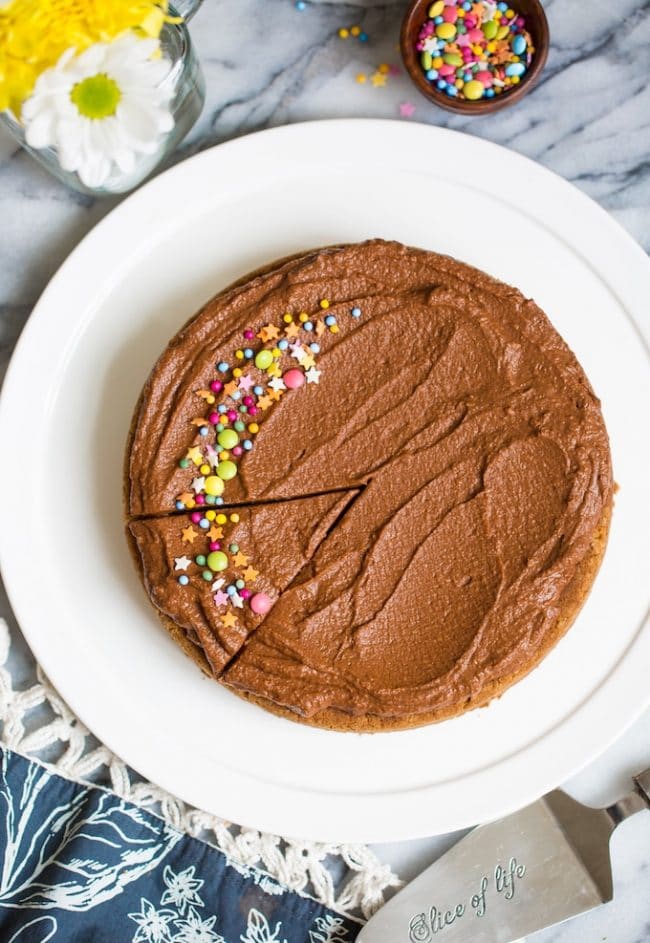
Egg Free Coconut Flour Paleo Cake
Soft and tender, egg free yellow paleo cake made with coconut flour. Only 15 minute prep and about 25 minutes to bake with only 8 ingredients! This cake is dairy, nut, and egg free! Top it off with a paleo chocolate frosting, coconut whipped cream, or enjoy it as is!
Ingredients
- 1 1/4 cup (300g) full fat coconut milk, stirred from a can
- 1/4 cup (60 ml) coconut oil, melted and cooled
- 1 teaspoon vanilla extract
- 1 teaspoon apple cider vinegar
- 1 cup (112g) coconut flour, lightly packed
- 1/4 cup (28g) tapioca flour
- 3/4 cup (135 g) coconut sugar
- 1 teaspoon baking soda
Instructions
- Preheat oven to 350°C/180°C. Lightly grease an 8inch round cake tin and set aside.
- In a small bowl or mixing cup whisk together the coconut milk, coconut oil, vanilla extract and vinegar until combined. Set aside.
- In a medium sized mixing bowl whisk together the coconut flour, tapioca flour, coconut sugar and baking soda until no lumps remain.
- Pour the wet mixture into the dry and stir to combine. The cake batter will be very thick and look more like dough than typical batter. This is easiest to mix using your hands. Once fully combined transfer the batter/dough to your prepared cake tin. Smooth out the dough to the sides and across the bottom in an even layer.
- Bake for 25-28 minutes. The top will be golden. To check for doneness insert a knife or toothpick into the centre of the cake - if it comes out clean and without any crumbs then it's done.
- Transfer the cake onto a wire cooling rack and let cool. Make sure it's completely cooled before frosting.
Notes
Tips
- Coconut milk & coconut oil should be the same temperature so that they mix together easily.
- Ideally you want to use a full fat coconut milk for the extra moisture. If your coconut milk is one that separates the cream from the water just stir it up or shake the can well before using.
- Don't be afraid to use your hands to mix the batter/dough together. I personally find it easier than a mixing spoon in this recipe.
Frosting Ideas
- I used my paleo + vegan sweet potato frosting in these pictures (nut free).
- Coconut whipped cream
- Enjoy as is!
Leftovers
Unfrosted leftovers can be kept at room temperature in an airtight container. This is best eaten within 2-3 days. If frosted, store in the fridge.
Final Note:
I have not tried this cake using any variation of flours/sweeteners so I'm afraid I don't know how to advise on substitutions.

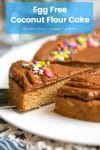
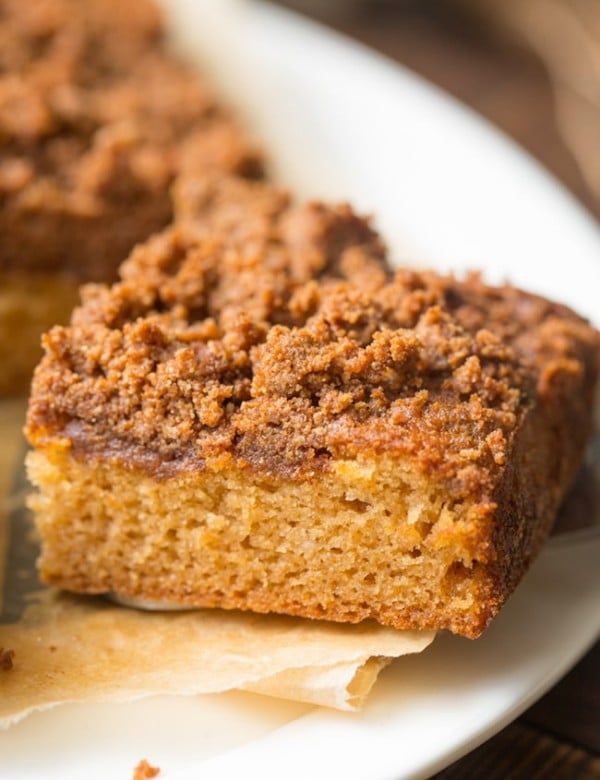
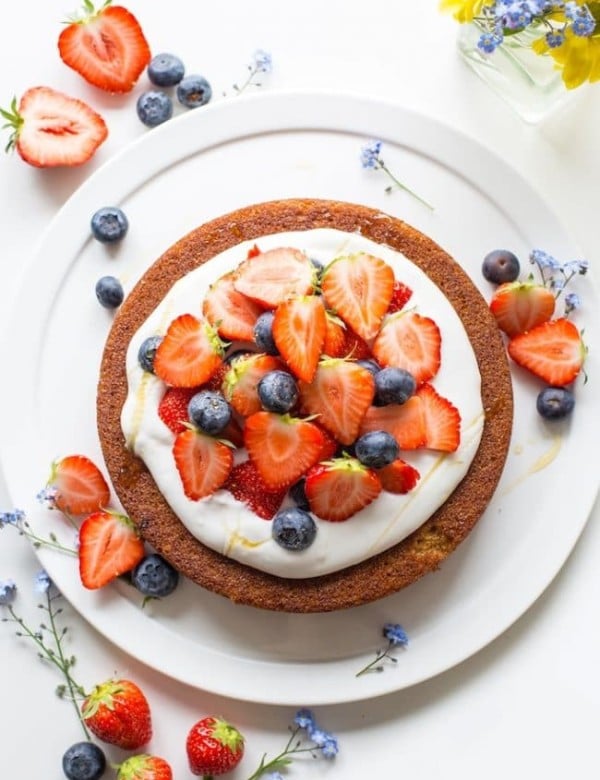
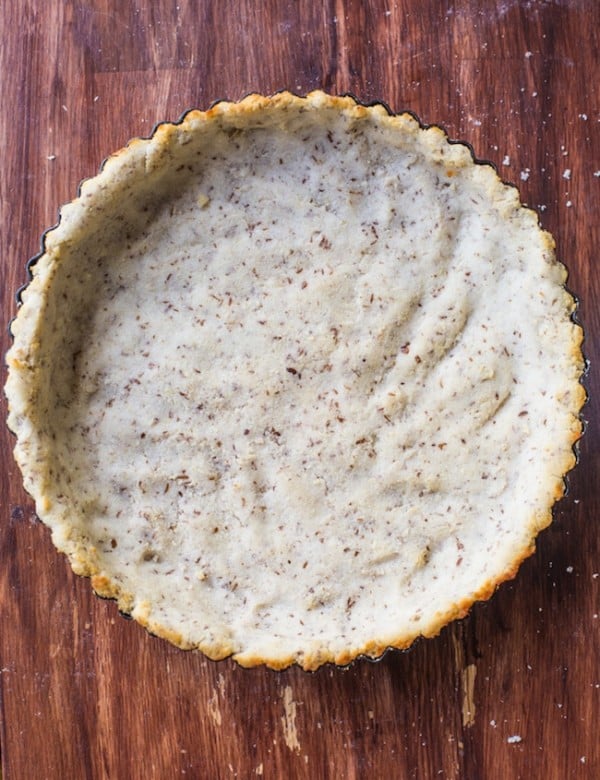
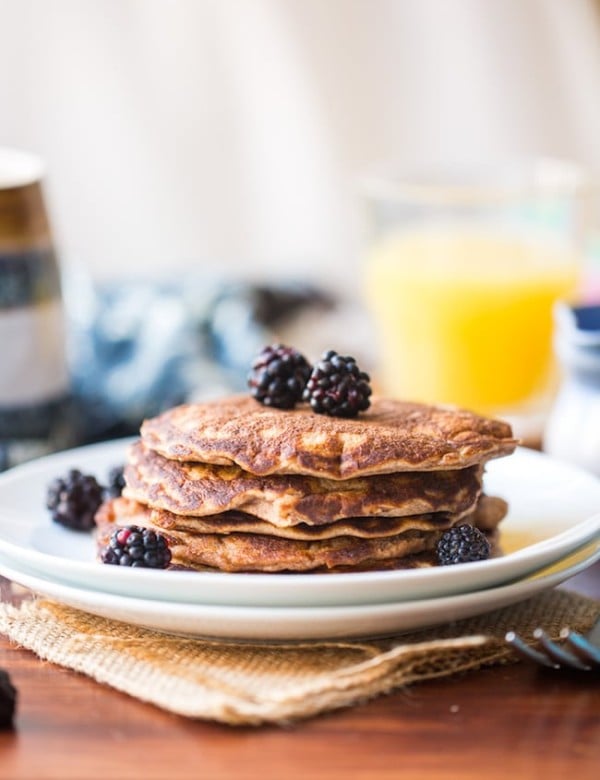
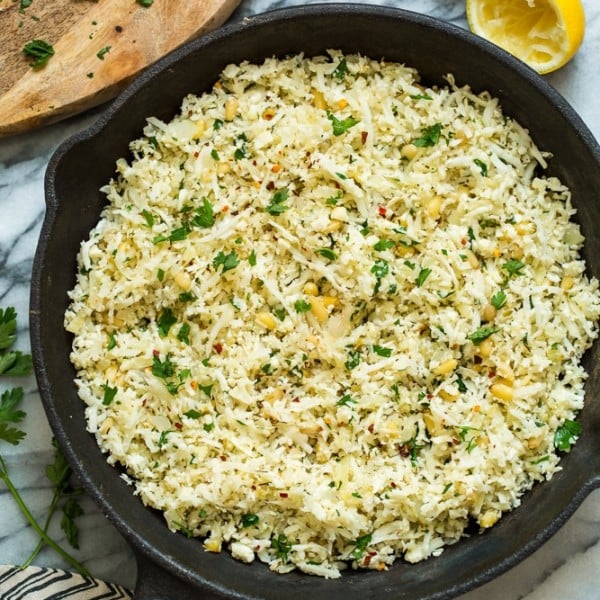

Suneri says
Hi, my family does not eat underground roots so I am wondering if rice starch would work instead of tapioca/arrowroot starch? Or any other flour or non-egg binding agent?
Sarah Nevins says
Hi Suneri! I’m really sorry, but I’m not sure what were be a good substitute here. My usual, go-to substitutes for this recipes are all things that grow underground (like potato and arrowroot). I have tried this with corn starch and I didn’t love the results as it was really inconsistent for some reason.
I wish I could be more help here, but this recipe took a lot of testing to get right! I’d just hate to give a suggestion without fully knowing the result and cause you to waste the ingredients.
Lex says
Hi I can’t have vinegar of any kind, not sure if there is a way to use something different
Sarah Nevins says
Hi Lex! Is lemon/citrus ok or is it best if you avoid strong acids in general?
If you’re ok to use baking powder you can leave out the vinegar and baking soda and add 1-2 teaspoons baking powder instead. The purpose of the vinegar here is to react with the baking soda to help the cake rise. Baking powder actually does this better, but it’s technically not paleo/grain free (usually) as it often contains cornstarch. If you’re ok with a bit of baking powder then this is a great option.
Hope this helps!
Joana says
Hello!!
3 questions:
– is it possible to use a sweetener rather than sugar? Monk fruit for example?
-what type off coconut milk did you used? Milk or cream?
– what is the size of the form that you used to bake the cake?
Thanks
Sarah Nevins says
Hi Joana!
I don’t know about the monk fruit, but when I was testing this recipe in the beginning I didn’t have much luck using other type of sweeteners as it would usually throw off the balance of wet and dry ingredients altogether. Monk fruit also isn’t something that readily available where I live so I don’t really have any experience using it, so I’m afraid I can’t be too much help when it comes to suggesting alternative sugars.
As for the coconut milk, you can use both the milk and the fat in the can. I recommend you shake the can well before opening it so you get a good mix of both the milk and cream.
And finally, this bakes in an 8inch round baking pan.
Hope that helps!
Sas says
This has become my go-to AIP cake recipe now, it’s so quick & simple to make, uses ingredients that are easy to find, is suitable for vegans, and tastes great! So many AIP cakes have tons of ingredients and require a gelatin egg, but this cake is just as nice as those more complicated recipes.
I’ve done it as an “upside down” cake a couple of times (i.e. lining the bottom of the tin with fruit) which turned out lovely – once with rhubarb & ginger and most recently with apple and cinnamon.
I’ve found I prefer to reduce the sugar a little bit, as it’s pretty sweet as written (or at least, it is if you’re used to eating a fairly low sugar diet! Although everyone I’ve fed it to has liked the lower sugar version too). I usually add half a cup of coconut sugar plus a tb or two.
I’ve also successfully subbed arrowroot for the tapioca in the past with no issues, and have used butter instead of coconut oil which also worked fine.
Sarah Nevins says
Hi Sas! That makes me so happy to hear 🙂
Love the sound of your upside down cakes – especially the rhubarb and ginger! Thank you so much for taking the time to come back and leave a review! I always find it really helpful to know what does/doesn’t work for others and I’m sure other readers find it helpful too!
Holly says
I made this twice. Because I’m like a lot of seasoned bakers, the first time I fearlessly made substitutions: real milk for the coconut milk, butter for the coconut oil, cane sugar for the coconut sugar, and arrowroot for the tapioca…plus I threw in some wild blackberries just before baking. It was a sweet mush. I cooked it for a whole hour and it just wouldn’t solidify, so I just ate it like a pudding because I’ve got a no-waste mentality. Yesterday I made it exactly according to the directions though, both measuring and weighing the ingredients. Oh–I still used arrowroot because I don’t tolerate tapioca/cassava. I did have to bake it a little longer because I’m at altitude, but it came out very nice. It’s actually cake this time. I let it cool several hours and the first slice I tried stayed together well. It wasn’t very sweet. Today (next day), it stays together even better and tastes sweeter. It is somewhat dense and coconutty-tasting, naturally. I made an 8-inch cake and it is pretty thin so I might double the recipe and use the same size pan next time. I’d also triple the vanilla next time and/or add a little fresh orange zest in an effort to mute the coconut flavor. I always use REFINED coconut oil because it is flavorless. Anyway, thank you so much for developing and sharing this recipe. I don’t see anything else like it on the internet, despite the number of people who can’t be well when they eat grains, cassava, nuts, dairy, or eggs–but they still have birthdays! I don’t know how you did this without gelatin, but you did, and because there’s no gelatin, vegan and vegetarian friends can share this cake.
Sarah Nevins says
Hi Holly!
I really appreciate that – thank you! I went through a lot of trial and error (and mushy cakes!) while testing out this recipe. While frustrating at the time it was definitely worth the effort knowing now how many people have been able to enjoy it despite whatever food intolerance/allergy they might have 🙂
I really love the sound of adding orange zest to the batter as well – that sounds like a great way to infuse a bit more flavor and it shouldn’t have any negative side effects either. Thanks!
Andrea Eisenberg says
I’m moving so I wanted to use coconut flour I found in the back of the pantry. This cake came out tasty and coconutty but it’s not something you can really frost and slice. It is moist but also very crumbly.
Sarah Nevins says
Hi Andrea! I’m glad you enjoyed the flavor! I’m wondering if maybe your cake might have needed more time in the oven to firm up a bit. While it should be moist, after it’s cooled it should definitely be easy enough to frost and slice.
If the oven temp/time was correct, it could possibly have to do with how the ingredients were measured. Since coconut flour baked goods need quite a lot of moisture to get right, it’s even more important to get as accurate an amount as possible when it comes to the other dry ingredients. While measuring cups are always handy and easy to use, a kitchen scale will give you best results as you can get the amount needed down the gram. If you don’t have a kitchen scale and you were to make this, I might just recommend packing the coconut flour into your measuring cup a little more firmly next time.
Hope that helps!
Antonia Sattler says
Can this be made with maple syrup instead of the actual sugar?
Sarah Nevins says
Hi Anotonia!
I don’t recommend maple syrup here unfortunately. I tried making this cake with maple syrup instead of coconut sugar when I was originally testing out the recipe and found that maple syrup/liquid sweeteners made the cake too mushy and gummy. It never quite set right and usually sank in the middle. Liquid sweeteners seem to throw off the wet to dry ingredient ratio too much, and would need a lot more testing to get right.
Jamz says
Hi. Just wondering if it’s possible to subs the coconut milk with dairy free milk? Thank you 🙂
Sarah Nevins says
Hi Jamz!
That’s a really good question! I’m almost positive that I tested this cake using a different type of dairy free milk other than full fat coconut milk, but I can’t remember! Thinking back now, I may have just stuck to coconut milk because I wanted to make a nut free/paleo cake.
I’m a bit torn on how I think it would go with a different type of milk. This recipe was a quite a tricky one to get right – a lot of little changes were really noticeable in the end. That being said, I do think a different type of dairy free milk would work out.
I’m going to test this out today using almond milk and report back to your comment tonight because now I really want to know too!
Kacey says
Hi – This is a super simple recipe and results in great flavor! I ran into a few snags, though. I made this recipe as cupcakes and did half as published and half with an additional 2 tbsp of unsweetened cocoa powder. Both flavors initially started to rise but then sunk so that the cupcakes looked like they had craters. I initially baked them for 20 minutes but they were still mushy in the middle when I took them out so I baked for an additional 15 minutes. They ended up tasting great but the consistency was off – they were crunchy on the outside and gooey on the inside and very oily on the bottom, the vanilla cupcakes more so than the chocolate. I’m wondering if I should use less oil or increase the flour next time. If I increase flour, which flour would you recommend increasing? Also, I used canned coconut cream instead of coconut milk – do you think that might have affected the consistency? Thanks for posting the recipe and providing your insights!
Sarah Nevins says
Hi Kacey! I’m glad you were still able to enjoy the flavor despite the hiccups!
I’ve got a couple of ideas that might help for next time.
First thing worth noting: how did you measure your ingredients? A kitchen scale will give you the most accurate measurements and this is especially important when baking with coconut flour. It’s such a fussy flour – too much or too little of anything is enough to throw everything off. Too much oil or cream with too little flour could very easily lead to dense, sunken cupcakes.
The other things (which I think is likely the bigger culprit) is the use of coconut cream. Coconut cream usually contains around 20% fat (sometimes more) while full fat coconut milk usually contains about 10-15% fat. With potentially double the amount of fat/oil in coconut cream, it very possible that this is what caused your cupcakes to come out oily and sunken. The excess oil would have had no where to go as there wasn’t enough dry ingredients/flour to absorb it.
Hopefully this was helpful, but please reach out again if you have more questions/don’t think I hit the issue and I’ll try to help as much as I can!
Kacey says
Thank you! This is very helpful. I’ll try using coconut milk next time and see if that resolves everything.
Sarah Nevins says
Ok so I’ve tried it out and you can swap out the canned coconut milk for another type of dairy free milk and it worked just fine!
Nadeen says
Can I skip the tapioca starch , or adding any starch ?
Sarah Nevins says
Hi Nadeen! I’ve tested this with tapioca starch and arrowroot starch, but I can’t guarantee results with anything else. I do believe I’ve had readers say they were able to use potato starch. I’m not sure cornstarch would work very well here – in the past when I’ve baked with cornstarch and coconut flour I tend to end up with dry baked goods.
JP says
Hi there! I rarely bother with online recipes etc, but came across your recipe and it looks AMAZING (as per the reviews). Quick questions: 1) Can I omit the tapioca flour entirely and just replace it with more coconut flour? 2) Can I use regular sugar and not coconut sugar, as I don’t have any on hand? 3) Can I bake it in a loaf pan or any other size pan as I don’t have a round pan? Sorry for the questions! Don’t mean to undermine your already-delicious looking recipe, just trying to make do with what I have on hand.
Sarah Nevins says
Hi JP! No worries at all – questions are always welcome 🙂
1. I wouldn’t recommend swapping out the tapioca for more coconut flour here as the amounts needed would almost certainly need to be changed quite a bit. Coconut flour is an extremely absorbent flour that needs to be used sparingly. A one to one sub here would likely make for a very dry cake.
2. Regular sugar should be no problem at all!
3. As for baking it in another pan I recommend a similar sized pan if possible (a square baking pan or even a pie plate) for the most similar results. I think a loaf pan might work, but you’ll probably need to increase the cooking time by at least 15 minutes. I recommend your cake at about 30 minutes just to be on the safe side and then assessing from there.
I hope this helps! Let me know if you have any more questions and I’ll do my best to help you figure it out!
JoDean says
Corn starch can be used in place of tapioca flour
Sarah Nevins says
Hi JoDean! I can’t say for sure without testing cornstarch in this specific recipe, but based on coconut flour recipes I’ve made in the past – cornstarch can be a bit hit and miss with the results. I usually end up with baked goods that come out a bit too dry so I wouldn’t recommend it here. Arrowroot starch will work and I do think I’ve had readers try this with potato starch successfully though!